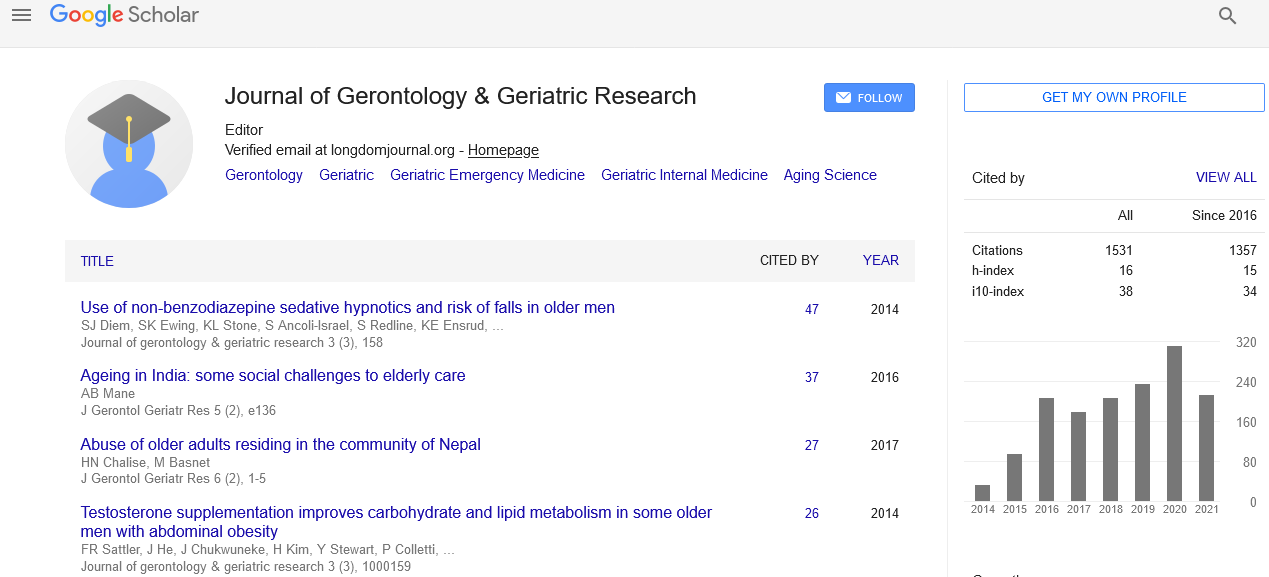PMC/PubMed Indexed Articles
Indexed In
- Open J Gate
- Genamics JournalSeek
- SafetyLit
- RefSeek
- Hamdard University
- EBSCO A-Z
- OCLC- WorldCat
- Publons
- Geneva Foundation for Medical Education and Research
- Euro Pub
- Google Scholar
Useful Links
Share This Page
Journal Flyer

Open Access Journals
- Agri and Aquaculture
- Biochemistry
- Bioinformatics & Systems Biology
- Business & Management
- Chemistry
- Clinical Sciences
- Engineering
- Food & Nutrition
- General Science
- Genetics & Molecular Biology
- Immunology & Microbiology
- Medical Sciences
- Neuroscience & Psychology
- Nursing & Health Care
- Pharmaceutical Sciences
Abstract
Hemoglobin Concentrations Predict Physical Function After A 12-Week Resistance Exercise Training and Subsequent Changes After 11 Months of Follow-Up Among Community Dwelling Older Adults
Gudjonsson MC, Geirsdottir OG, Briem K, Jonsson PV, Thorsdottir I and Ramel A
Background: Hemoglobin transports oxygen in blood yet its concentrations generally decrease with age. The aim of the study was to examine whether hemoglobin is connected with physical function in older age people.
Design: Intervention study.
Setting: Community.
Participants: Older adults (N=236, 73.7±5.7 years, 58.2% female).
Intervention: A 12-week resistance exercise program (3 times/week; 3 sets, 6-8 repetitions at 75-80% of the 1-repetition maximum) was conducted to increase strength and muscle mass of major muscle groups.
Measurements: Anthropometrics, muscle strength, timed up and go (TUG in sec), six-minute walking distance (6MWD in m) and blood chemical variables were measured at baseline, endpoint and after 10.7 months followup. The linear regression model was used to examine the association between baseline hemoglobin and physical function outcome.
Results: Only about 4% of the participants were anemic. According to calculations baseline hemoglobin was associated with TUG (0.14 to 0.36 sec improvement by 10 g/L increase of hemoglobin) at all-time points, even though this was of borderline significance for baseline (p=0.57) and endpoint (p=0.062). Hemoglobin also predicted endpoint 6 MWD (4.88m), but not at baseline (follow up 6 MWD was not available). Statistical correction for compliance did not influences results.
Conclusion: Hemoglobin is positively associated to physical function in community dwelling old aged people. Additionally, we found that baseline hemoglobin is associated to adaptions to 12-week resistance exercise training and changes in physical function during the follow-up.


